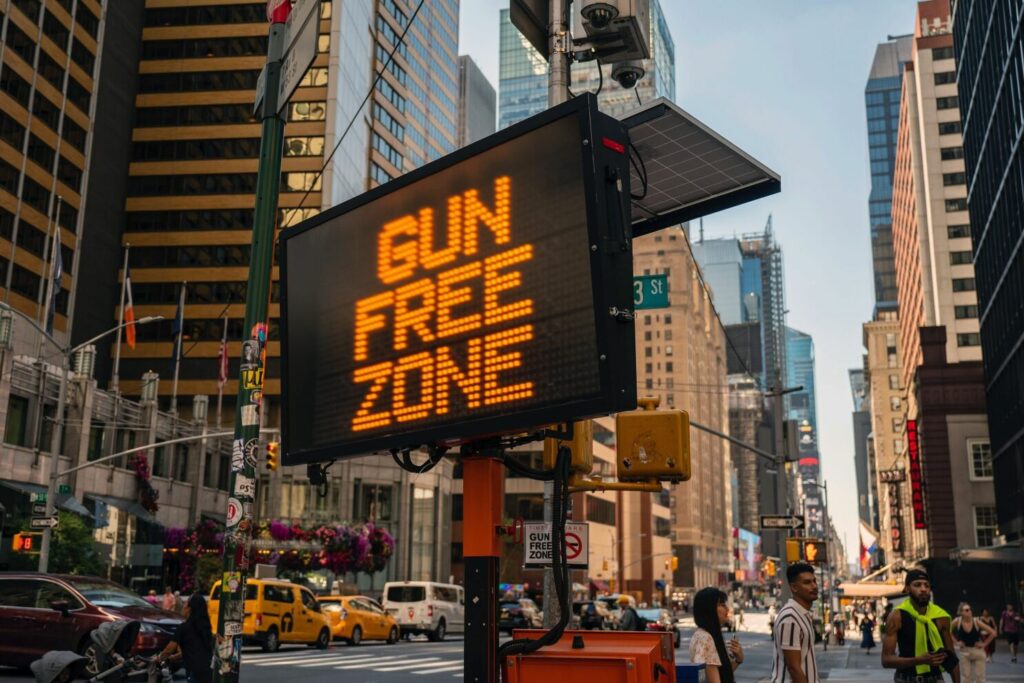The conversation about gun violence in the United States is complex and multi-layered. One facet of this debate revolves around the establishment of gun-free zones, which are areas where the possession of firearms is strictly prohibited. This article aims to delve into why gun-free zones might be an instrumental tool in the broader strategy to curb violence in the USA.
Gun-Free Zones: An Overview
Gun-free zones are designated areas in which the possession of firearms is strictly prohibited or significantly restricted. These areas can include schools, colleges, government buildings, private businesses, and more. The intention behind these zones is simple: to create safe spaces where people can work, learn, and interact without the fear of gun violence.
Reducing Access to Weapons: A Critical Aspect of Violence Prevention
The first point to consider is accessibility. Studies have consistently shown a positive correlation between accessibility to firearms and violent episodes. The more readily available guns are, the more likely they are to be used in acts of violence. By making certain high-risk areas gun-free zones, we could potentially reduce the incidence of gun violence in these areas. The logic is simple: without guns, gun violence becomes impossible.
Mitigating Accidental Discharges and Suicides
Another critical aspect of gun-free zones is the prevention of accidental discharges and suicides. Every year, numerous people, including children, are injured or killed due to accidental discharges. Furthermore, access to firearms has been linked to an increased risk of suicide. It can mitigate these tragic incidents by reducing the presence of firearms in public spaces, and decreasing the chance of accidental discharges or impulsive suicides.
Setting Cultural Norms: Promoting a Culture of Non-Violence
Gun-free zones also have a more profound, less tangible impact: they help establish cultural norms. By designating areas as gun-free, we send a clear message that our society values safety, peace, and respect for life over unrestricted gun access. This change can help foster a culture of non-violence and encourage more thoughtful, responsible behaviors around firearms.
Challenges and Counterarguments
It’s important to acknowledge the challenges and criticisms of gun-free zones. Critics argue that these zones may inadvertently create targets for individuals intent on perpetrating violence, as they know potential victims will be unarmed. This argument, while valid, doesn’t negate the potential benefits. Instead, it highlights the need for comprehensive solutions, including effective law enforcement, mental health resources, and robust emergency protocols in these areas.
Moreover, success hinges on enforcement. Without stringent checks and punitive measures for violations, these zones may fail to provide the intended protection. Thus, the establishment of gun-free zones must go hand in hand with effective enforcement mechanisms.
The Path Forward: Comprehensive Gun Violence Prevention
To reiterate, gun-free zones alone won’t eradicate gun violence in the United States. They are, however, a potential part of a multi-pronged strategy to curb violence. This strategy should also include measures such as improved background checks, mental health support, safe storage laws, and public education about firearm safety.
4 Ways Fathers Can Help Prevent Domestic Violence(Opens in a new browser tab)
In conclusion, the establishment of gun-free zones could be a significant step towards a safer, more peaceful society. However, they should not be viewed as a standalone solution but rather one piece of a larger, more comprehensive approach to combat gun violence. With thoughtful implementation and consistent enforcement, gun-free zones may help us move closer to a future where senseless acts of violence are a thing of the past.
